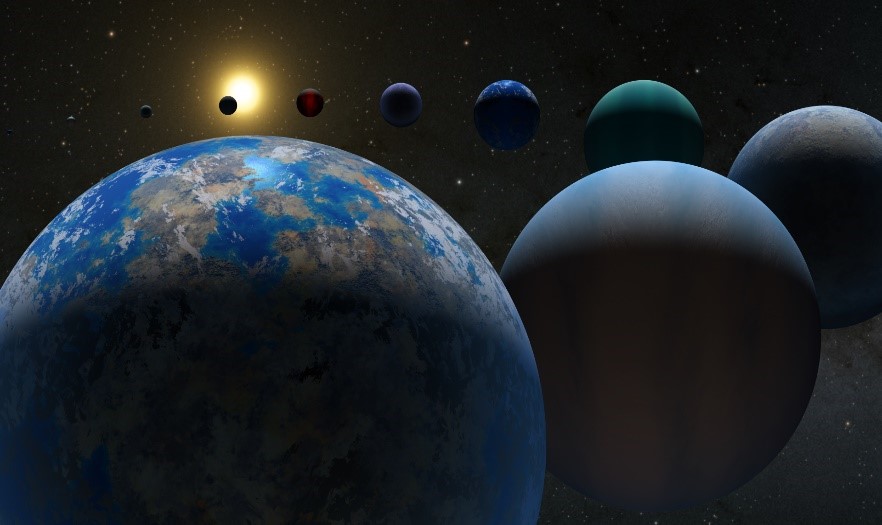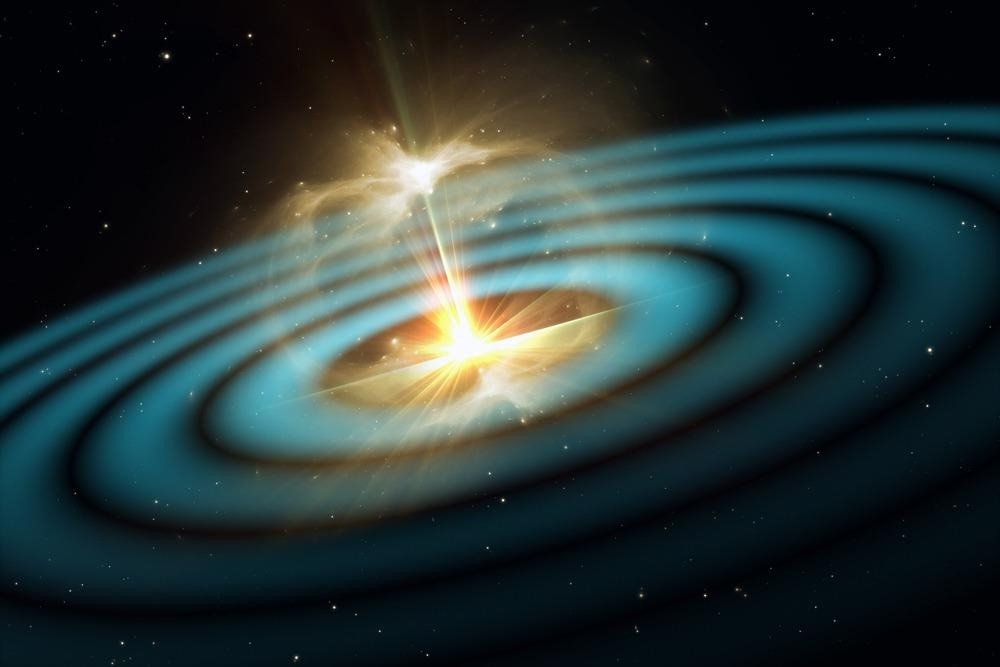Unveiling the Invisible: The Power of Multi-Wavelength Astronomy
For tens of thousands of years humans have used their eyes to see light coming from the night sky. Today we use scientific instruments to observe the invisible Universe all around us.
At the beginning of the 17th century, the invention of the astronomical telescope by Galileo revolutionized our knowledge of the Universe. In the 20th century, with the arrival of rockets, it became possible to travel above the Earth’s atmosphere and observe X-ray and gamma ray radiation, evidence of a hot and violent Universe.

Figure 1. Unveiling the Invisible: The Power of Multi-Wavelength Astronomy
Unveiling the Invisible: The Power of Multi-Wavelength Astronomy is shown in Figure 1. It’s not only light that provides information about the Cosmos. Neutrinos and cosmic rays reveal its secrets. More recently, the detection of gravitational waves from two merging black holes by the LIGO experiment, opened an entirely new window in astrophysics.[1]
The Universe sends us light at all wavelengths, across the electromagnetic spectrum, with each portion of the spectrum bringing us unique information about the cosmos. X-rays and gamma rays bring us information about high-energy phenomena such as black holes, supernova remnants, hot gas, and neutron stars. Ultraviolet light reveals hot stars and quasars while visible light shows us warmer stars, planets, nebulae, and galaxies. In the infrared we see cool stars, regions of starbirth, cool dusty regions of space, and the core of our galaxy. Radiation in the radio region shows us cold molecular clouds and the radiation left over from the Big Bang. Multiwavelength studies have led to the discovery of numerous new objects in space and have allowed us to "see" the Universe as never before. With advances in technology and the ability to place telescopes into space, we can now see the Universe in all of its light![2]
Beyond the Visible: The Electromagnetic Spectrum
- Introduce the electromagnetic spectrum, from radio waves to gamma rays.
- Explain how different wavelengths provide unique information about celestial objects and processes.
- Highlight the limitations of visible light astronomy and the need for multi-wavelength observations.
Radio Astronomy: Listening to the Universe
- Explore the role of radio telescopes in detecting radio waves emitted by cosmic sources.
- Discuss how radio astronomy unveils phenomena such as pulsars, quasars, and cosmic microwave background radiation.
- Explain the development of arrays like the Very Large Array (VLA) and their impact on our understanding of the universe.
Infrared and Submillimeter Observations: Peering Through Cosmic Dust
- Highlight the significance of infrared and submillimeter observations in penetrating dust clouds that obscure visible light.
- Discuss how telescopes like the Atacama Large Millimeter/submillimeter Array (ALMA) reveal the birth of stars and planetary systems.
- Explore the potential for studying molecular clouds, protostars, and distant galaxies.
Ultraviolet and X-ray Astronomy: High-Energy Universe
- Explain how ultraviolet and X-ray observations reveal high-energy phenomena, such as hot gas and black hole accretion disks.
- Discuss space-based observatories like the Chandra X-ray Observatory and the Hubble Space Telescope's ultraviolet capabilities.
- Highlight discoveries related to supernova remnants, galaxy clusters, and active galactic nuclei.
Gamma-Ray Astronomy: Exploring Cosmic Particle Accelerators
- Introduce the concept of gamma-ray astronomy and the detection of extremely high-energy photons.
- Discuss gamma-ray bursts, pulsar wind nebulae, and other gamma-ray sources.
- Highlight the role of observatories like the Fermi Gamma-ray Space Telescope in understanding particle acceleration and extreme environments.
Conclusion: Multi-wavelength astronomy opens a captivating window into the universe's hidden dimensions, allowing us to uncover mysteries that would otherwise remain obscured. By piecing together observations from different wavelengths, astronomers are painting a richer and more detailed portrait of cosmic processes, from the birth of stars to the behavior of black holes. As technology continues to advance, multi-wavelength observations will play a pivotal role in advancing our understanding of the cosmos and reshaping the frontiers of astronomical discovery. Stay tuned for the next installment in our series, where we'll continue our exploration of the exciting future of astronomy.
References:
- https://astro.umaine.edu/planetarium-program/unveiling-the-invisible-universe/
- https://coolcosmos.ipac.caltech.edu/system/media_files/binaries/87/original/MWUfull.pdf?1375836766
Cite this article:
Gokula Nandhini K (2023), The Future of Astronomy: Advancements and Discoveries, AnaTechmaz, pp.2





